Our Supporters
We were fortunate to receive the support and guidance of highly esteemed individuals from the fields of earth sciences, media, and literature. Their invaluable patronage was instrumental to the success of the Mary Anning Rocks campaign, and we extend our heartfelt thanks for their dedication and commitment to the campaign.

Tracy Chevalier
Tracy Chevalier is the author of nine novels, including the international bestseller Girl with a Pearl Earring, as well as Remarkable Creatures, a novel about Mary Anning. She grew up in Washington DC and in 1984 moved to London, where she lives with her husband and son. Tracy is a Trustee of the British Library and President of the Royal Literary Fund, and a Patron of the Lyme Regis Museum.
‘Mary Anning is an inspiring example of how an ordinary person can do extraordinary things. She found fossils others didn’t know existed, and she persisted when it was unheard of for someone of her gender and class to take part in scientific discovery. I would love to see a statue of her in Lyme Regis. She is a heroine to us all.’
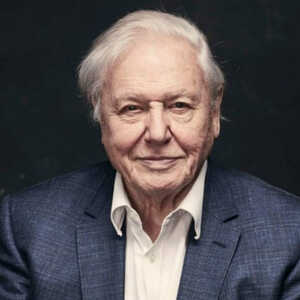
Sir David Attenborough
Sir David Attenborough is a broadcaster and naturalist. After studying natural sciences at Cambridge, he began his career as a producer at the BBC. He was made controller of BBC 2 in 1965 and later its director of programming. During his tenure he was instrumental in expanding its natural history content.
Attenborough begin writing and producing various series, including the smash hit Life on Earth, which set the standards for the modern nature documentary. Since then Attenborough has written, produced, hosted and narrated countless award winning, nature-focused programs and has devoted his life to celebrating and preserving wildlife.
"Dear Evie, Thank you for your letter, Mary Anning certainly deserves a statue. Do please add my name to the list of those supporting your campaign to erect a statue to Mary, and thank you very much for the tiny ammonite. It is now the smallest in my collection."
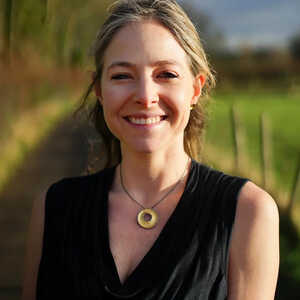
Professor Alice Roberts
Professor Alice Roberts is an academic, writer and broadcaster, interested in the structure of humans, how we function, and our place in the wider environment. Alice makes programmes and writes books about human anatomy, physiology, evolution, archaeology and history. She passionately believes that universities are about generating and spreading knowledge to the widest possible audience.
Alice is a medical doctor, and went on to become a university lecturer. Alice has also been Professor of Public Engagement with Science at the University of Birmingham since 2012.
"Mary Anning, an outsider in the male-dominated sphere of nineteenth century science, is one of the most important pioneers in British palaeontology. From ichthyosaurs to plesiosaurs, pterosaurs to prehistoric sharks, Mary Anning unearthed a huge wealth of fossils, casting light on the wonderful range of ancient life entombed in the rocks of her home town, Lyme Regis. A statue of Mary Anning would help to redress the balance, recognising her contribution to science.”
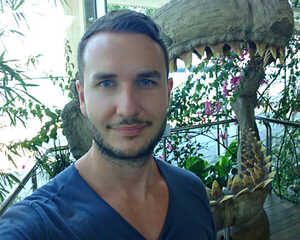
Dr Dean Lomax
Dr Dean Lomax is an internationally recognised multi-award-winning palaeontologist, presenter and author. He has travelled the globe and worked on many fascinating projects from excavating dinosaurs in the American West, to describing new species of extinct marine reptiles, and winning a gold medal for excellence in science. Dean is passionate about communicating palaeontology with the public and regularly appears on TV & radio. He is the author of several books, numerous scientific papers, and many popular articles. In 2015, he named a new species of ichthyosaur after Mary Anning – Ichthyosaurus anningae – the first ichthyosaur named in her honour and it only took 200 years!
‘Mary Anning has been a hero of mine for as long as I can remember. From the books I read or museums I visited as a child, I was captivated by the story of a young, brilliant and ‘uneducated’ woman who had made remarkable fossil discoveries – discoveries that would change the world. Mary’s story further inspired me to follow my dreams of becoming a palaeontologist.'
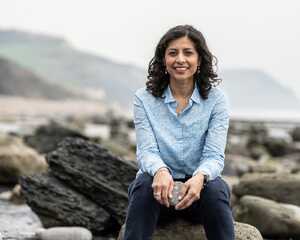
Dr Anjana Khatwa
Dr Anjana Khatwa is an Earth Scientist specialising in bringing stories about the origins and formation of natural landscapes to life for a wide range of audiences. She is an established learning professional and has a highly regarded international reputation as an expert on Earth Science and World Heritage education. She has published numerous papers on science education, glacial geology and was the recipient (with her team) of the Geographical Award from the RGS-IBG in recognition of her services for education about the Jurassic Coast World Heritage Site. She has overcome significant barriers in her personal and professional life to achieve huge impact in the field of Earth Sciences and ensuring this is accessible for all audiences.
“As a woman of colour working in the Earth Sciences, I have faced numerous obstacles and barriers in my personal and professional life to follow my chosen career. For me, Mary Anning is an iconic figure who sought to achieve recognition and justice for her contributions to science. When I walk through the doors of Burlington House, home to the Geological Society of London, I look at her portrait on my left as I enter and give her my silent thanks. It is because of her discoveries, her self-belief and ultimately her fight for recognition that I am able to walk through those doors with my head held high as a woman of science”.

Trowel Blazers
TrowelBlazers is an organisation dedicated to outreach activities aimed at encouraging participation of women and underrepresented groups in archaeological, geological, and palaeontological science. Created by the founding four Brenna Hasset a bioarchaeologist who is especially interested in studying child health in the past - Victoria Herridge a palaeobiologist who’s specialist topic is the evolution of ice age dwarf elephants - Suzanne Pilaar Birch who combines archaeology with biochemisty to investigate how humans adapted to climate change in prehistory and Rebecca Wragg Sykes is a Palaeolithic archaeologist who especially finds Neanderthals fascinating.

The Geologists’ Association
The Geologists' Association is a British association concerned with the study of geology. The GA was founded in 1858. It is a charitable organisation for all geologists and earth scientists, whether of professional or amateur status.
We are so thrilled to be supported by The Geologists Association and to be the recipients of an award of funds from The Curry Fund to help us raise a statue for Mary Anning. For more information about The Geologists' Association please click HERE.
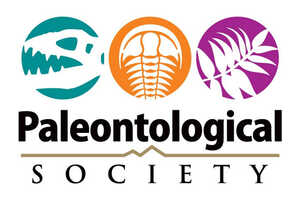
Paleontological Society
Advancing knowledge and understanding of paleontology and life’s evolution through research, education, and advocacy.
Since 1908, the Paleontological Society has been committed to the global advancement of invertebrate and vertebrate paleontology, micropaleontology, and paleobotany. Our membership structure includes many different categories to encourage participation from paleontologists at all points in their lives and careers. Through annual meetings, conferences, grant funding, and journal publication, we promote a free exchange of ideas that ensures the continued relevance of the field.
Through accessibility and inclusivity, we continue to explore, publish, and create dialogue around new voices and ideas. We encourage everyone with a passion for paleontology to join us.
We are so happy to be supported by the Paleontological Society and to be the recipients of an award of funds from our friends in America. Having the recognition and support form such a prestigious organisation from overseas shows the global draw, love and appreciation for Mary Anning and the legacy she left behind for us. For more information about the Paleontological Society please click HERE.

The Paleontological Research Institution
The Paleontological Research Institution (PRI) was founded in 1932 by Gilbert D. Harris, a professor of geology at Cornell University. PRI’s mission is to pursue and integrate education and research, and interpret the history and systems of the Earth and its life to increase knowledge, educate society, and encourage wise stewardship of the Earth. PRI operates three public educational venues near Ithaca, New York: the Museum of the Earth, the Cayuga Nature Center, and Smith Woods, an old-growth forest. Click HERE to learn more.
PRI is honored to provide support to Mary Anning Rocks for the construction of a statue of Mary Anning at Lyme Regis. Mary Anning’s life demonstrates that while modern paleontology is becoming a more welcoming field for everyone, this was not always the case. Mary Anning and other women contributed significantly to the development of the science of paleontology, but their adventures, discoveries, and research accomplishments are only now becoming better recognized and acknowledged. PRI’s new physical and online exhibit, Daring to Dig: Women in American Paleontology, tells the stories of remarkable women paleontologists, from those who paved the way to those leading the science today.
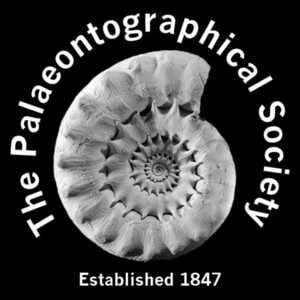
Palaeontographical Society
The Palaeontographical Society was established in 1847, and is the oldest Society devoted specifically to the advancement of palaeontological knowledge in existence. The primary role of the Society is to promote the description and illustration of the British fossil floras and faunas, and it publishes monographs to this end. These document the fossil species from a wide range of taxonomic groups, from chitonozoans and coccolithophorids through to mammals and reptiles, and from all ages from Cambrian to Pleistocene.
An Annual Volume is published, consisting of a number of complete or part monographs, each enclosed in its own covers. The first monograph (on the Crag molluscs) was published in March 1848 and to date 641 monographs or part monographs have appeared. It was through this Society that Charles Darwin published his monograph on the fossil barnacles, and Richard Owen set out his early descriptions of dinosaurs. Many of these publications are still available for purchase, either as originals or as reprinted parts.
The Society also supports taxonomic research into the British fossil faunas and floras through its Research Fund. This provides financial support for palaeontological research (travel, visits to museums, fieldwork, etc.) within the Society’s remit of describing the fossil fauna and flora of the British Isles. For mort details please click here. link.

